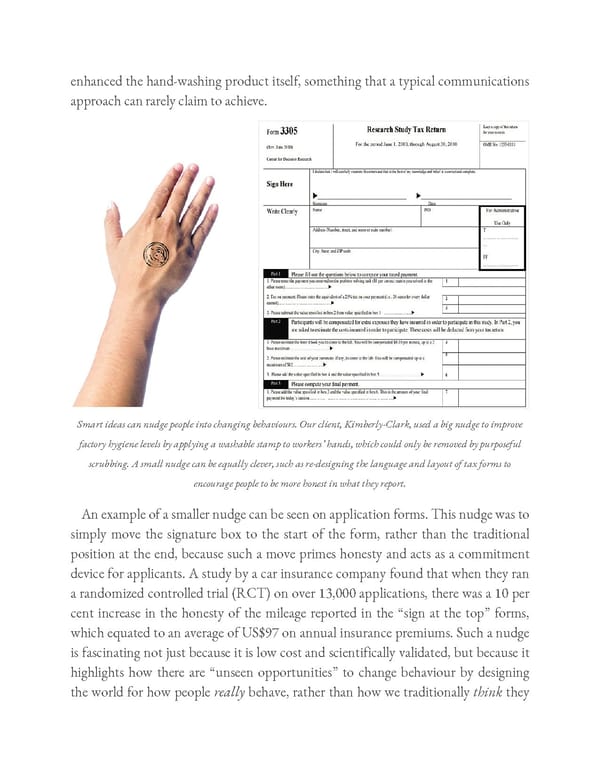enhanced the hand-washing product itself, something that a typical communications approach can rarely claim to achieve. Smart ideas can nudge people into changing behaviours. Our client, Kimberly-Clark, used a big nudge to improve factory hygiene levels by applying a washable stamp to workers’ hands, which could only be removed by purposeful scrubbing. A small nudge can be equally clever, such as re-designing the language and layout of tax forms to encourage people to be more honest in what they report. An example of a smaller nudge can be seen on application forms. This nudge was to simply move the signature box to the start of the form, rather than the traditional position at the end, because such a move primes honesty and acts as a commitment device for applicants. A study by a car insurance company found that when they ran a randomized controlled trial (RCT) on over 13,000 applications, there was a 10 per cent increase in the honesty of the mileage reported in the “sign at the top” forms, which equated to an average of US$97 on annual insurance premiums. Such a nudge is fascinating not just because it is low cost and scientifically validated, but because it highlights how there are “unseen opportunities” to change behaviour by designing the world for how people really behave, rather than how we traditionally think they
 Ogilvy on Advertising in the Digital Age Page 407 Page 409
Ogilvy on Advertising in the Digital Age Page 407 Page 409